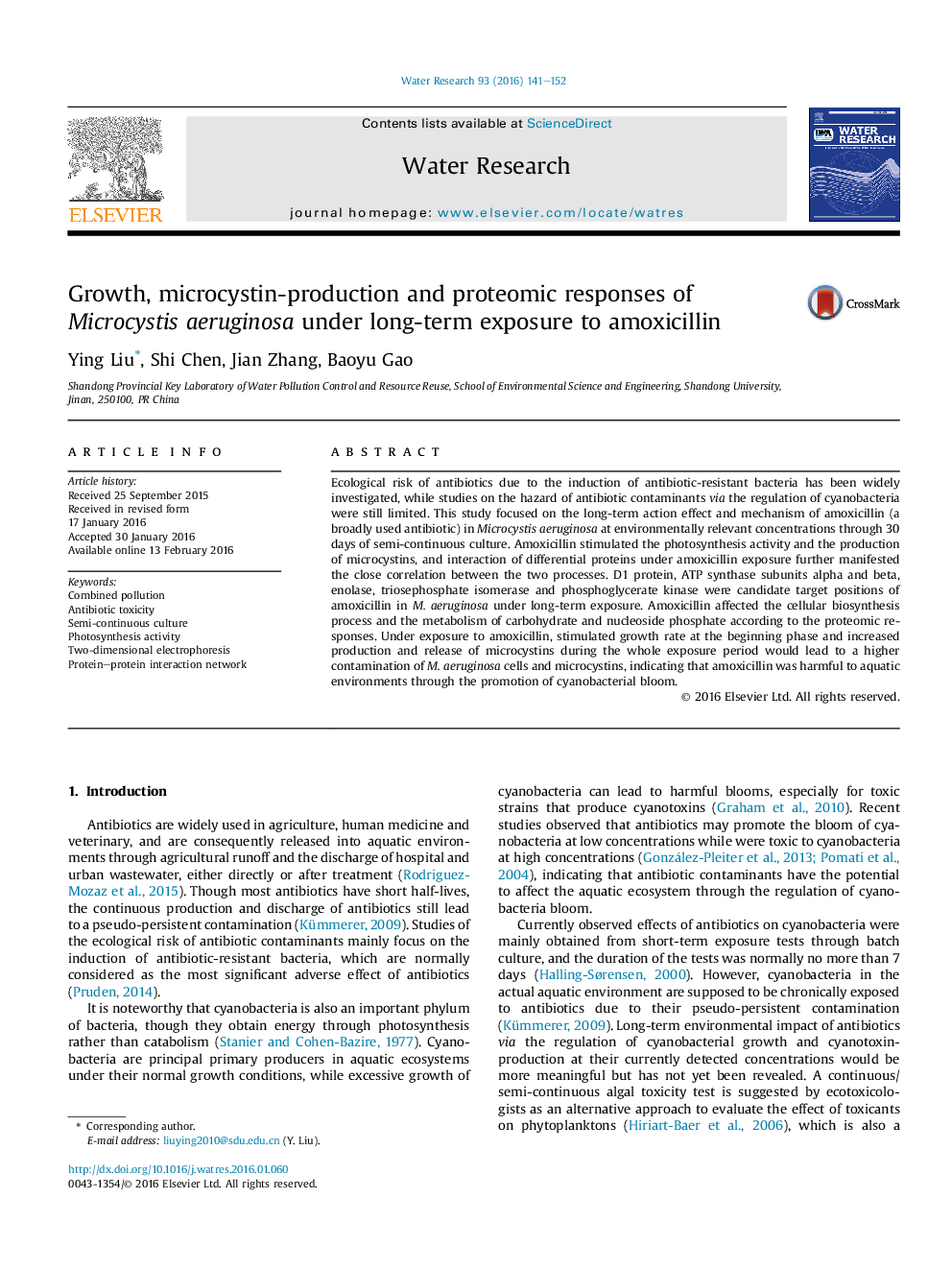| Article ID | Journal | Published Year | Pages | File Type |
|---|---|---|---|---|
| 4480944 | Water Research | 2016 | 12 Pages |
•Long-term exposure to amoxicillin increases the hazard of Microcystis aeruginosa.•Microcystin-production closely relates with photosynthesis via protein interaction.•Amoxicillin affects biosynthesis, glycolysis, gluconeogenesis and energy metabolism.•Six candidate target positions of amoxicillin were found in M. aeruginosa.
Ecological risk of antibiotics due to the induction of antibiotic-resistant bacteria has been widely investigated, while studies on the hazard of antibiotic contaminants via the regulation of cyanobacteria were still limited. This study focused on the long-term action effect and mechanism of amoxicillin (a broadly used antibiotic) in Microcystis aeruginosa at environmentally relevant concentrations through 30 days of semi-continuous culture. Amoxicillin stimulated the photosynthesis activity and the production of microcystins, and interaction of differential proteins under amoxicillin exposure further manifested the close correlation between the two processes. D1 protein, ATP synthase subunits alpha and beta, enolase, triosephosphate isomerase and phosphoglycerate kinase were candidate target positions of amoxicillin in M. aeruginosa under long-term exposure. Amoxicillin affected the cellular biosynthesis process and the metabolism of carbohydrate and nucleoside phosphate according to the proteomic responses. Under exposure to amoxicillin, stimulated growth rate at the beginning phase and increased production and release of microcystins during the whole exposure period would lead to a higher contamination of M. aeruginosa cells and microcystins, indicating that amoxicillin was harmful to aquatic environments through the promotion of cyanobacterial bloom.
Graphical abstractFigure optionsDownload full-size imageDownload high-quality image (253 K)Download as PowerPoint slide
